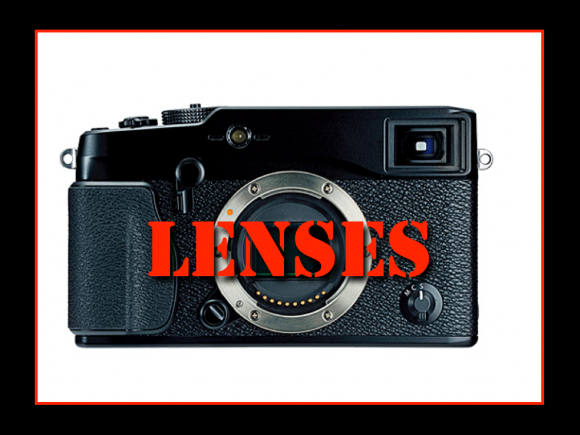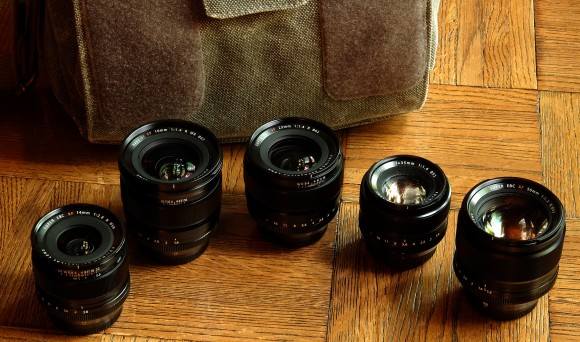Daily Archives: May 11, 2015
OK, I admit it, I love lenses, what’s not to love!!! In the process of trying to capture those glorious moments of interesting subjects and great light, they are what focuses the image onto the sensor! No single factor has more of an affect on the final image than the lens! A lens has to do a lot of important things: sharply render the details, keep the color correct, maintain contrast, prevent contrast robbing flare, faithfully capture the intricate variations of color, and much more!!!!
Here are a few of my most frequently asked questions about lenses:
1. Are single focal length lenses better than zooms?
First you need to define BETTER! Example, if you are standing on the sidelines of a soccer game and your 60mm lens does not reach out far enough to fill the frame with a single player you want to capture, a 70-200 is better! Is there a difference in image quality? Yes, but usually only a very small amount! In the Fuji system the 16 f 1.4 is sharper at 16mm than the 16-55 f 2.8 at 16mm, but only by a small margin. Zoom lenses are more complex and thus harder to correct to the ” inth” degree, but today, with ED and Aspheric glass elements they’re coming extremely close to the quality of primes! Primes still win by a nose!
2. If the difference is small between zooms and primes, why bother with primes?
Primes advantages are usually, larger maximum apertures ( often f 1.2, 1.4, or f 2) vs f 2.8 or slower on zooms. Primes are usually smaller and more compact. Primes also require the photographer to change physical distance and position, which increases your photographic abilities, and often results in unique images! Primes also keep the X-System small and managable!
3. So which should I buy?
I would say a few of each! If you do mostly street, portrait, fashion, and fine art work, I might lean to primes. If you are a nature, landscape, wildlife, or sports shooter, zooms are hard to beat! So, if you do some of all the above, a combination will serve you well.
4. The obvious question is which ones!?
This a lot tougher question, because as John Shaw used to say to all questions, “It all depends!” For example, a nature landscape shooter might find that a wide angle zoom (for me the 10-24), a mid-range zoom, (16-55), and a telephoto zoom ( either the 55-200 or the 50-140) and some way to do close-ups ( for me the 60mm Micro, Diopters and auto extension tubes). If you also like to photograph people both portrait and environmental portraits, a fast 23mm and 56mm might fill the bill!
Travel shooters can do a lot of great work with just the 14mm f2.8 and the 18-135, giving a range of focal lengths of from 21mm to 200mm in just two lenses!
A photojournalist who works in very low light might do great with a 16mm, 23mm, 35mm and 56mm all at 1.2 speed, the 56mm at 1.2 speed! They will be prepared for almost everything, except sports!
5. What is your solution to which ones to own and carry?
I have broken my lenses into two categories and they are bagged separately. In one bag I have my speed lenses. Primes with fast maximum apertures, below;
Left to Right; 14mm f 2.8, 16mm f 1.4, 23mm f 1.4. 35mm f 1.4, and the 56mm f 1.2, I will add the 90mm f 2 to this bag when it becomes available.
Zooms:
In a small Think Tank Airport Essentials Backpack I have three bodies 2 X-T1s and an X-E2 plus the zooms below;
Left to Right; 60mm Micro and two MCEX 16mm auto extension tubes and one MCEX 11mm tube, Samyang 8mm fisheye lens f 2.8, 10-24 f 4, and 16-55 f 2.8,ND 50-140 F 2.8. Not shown because it was being used to make this image, the 18-135 f 3.5-5.6 zoom. I additionally own the 55-200 f 3.5-4.8 zoom and the 18-55 f 2.8-4 zoom.
Since I travel by car, as much as possible, I can have both bags handy for the kind of work I’m doing at the moment. When I travel by air I generally take the zoom kit in a rolling bag, the Think Tank Airport Security 2.0 along with my laptop and accessories.
I am really looking forward to the promised 1.4 converter and the 120 mm Micro f 2.8 OIS WR, hopefully coming next year!
6. What about long glass?
There are several things on that. First, Fuji does not “currently” have any rally long lenses. They are showing a 100-400 f 4.5-5.6 on the Lens Road Map for next year, that would be a 150mm to 600 mm at pretty reasonable speed for most of us, and if it autofocuses quickly it may be all some of us will ever need!!! Fast 300mm, 400mm. 500mm. 600mm like Canon and Nikon? Nope, not yet, but I’m sure they are working on it. For now if you do not need autofocus for your long glass shots, you can use older legacy glass from all the major manufacturers with adapters. I use the Nikon 300mm f 4.5 IF-ED (45omm equiv.) and the 400 f 3.5 IF-ED (600mm equiv.) with great success!
This image in the Palouse Region of Washington State was made with the Nikon 300mm with an adapter.
Having said all this, please remember Rod Planck’s famous quote, “Technique beats equipment, everytime!!!”
Blessings,
the pilgrim
This post has 14 comments. Click here to read them
This entry was posted on Monday, May 11th, 2015 at 12:42 pm
You can follow any responses to this entry through the RSS 2.0 feed.






